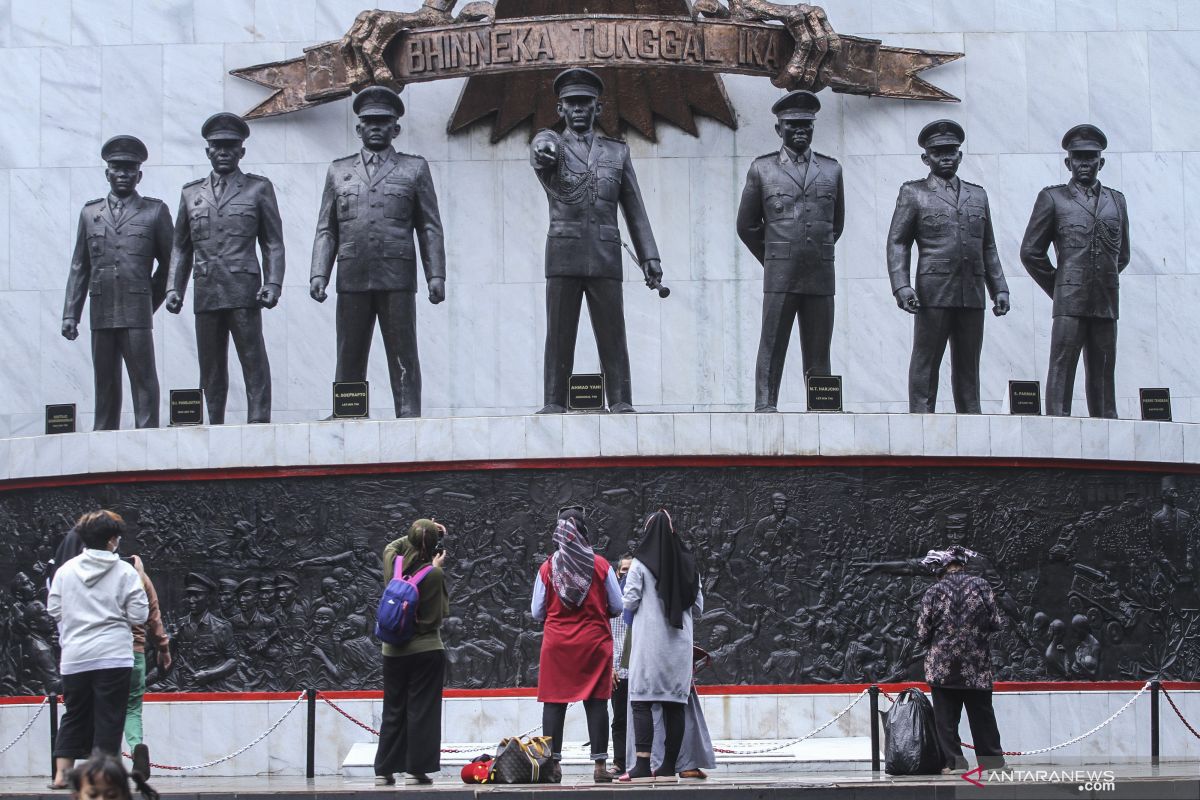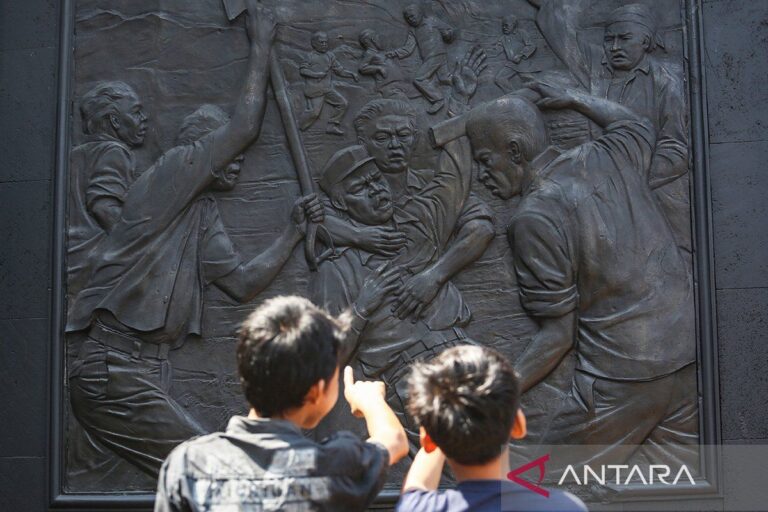
Jakarta (ANTARA) – The events of the 30 September 1965 Movement or better known as G30S PKI became an important point in the modern history of Indonesia. This event was not only the dark testimony of an attempted coup, but also left a long political, social and cultural impact to this day.
Understanding the background and timeline of the G30S PKI is important so that the current generation can see how the dynamics of power, ideology, and conflict at that time shaped the direction of travel of the Indonesian nation.
The following is the background of the rebellion and the timeline of events of the G30 SPKI in Indonesian history, based on information gathered from various sources.
Read also: Inspiration for the last 30 G30S/PKI commemorative wishes on September 30, 2025
Context of the G30S PKI rebellion
The background of the emergence of the G30S PKI rebellion was closely linked to the existence of the Indonesian Communist Party (PKI), which at that time was one of the largest political forces in the country.
In the run-up to the 1965 coup, the PKI increasingly conducted propaganda and mobilized the masses to increase its influence. Since July 1960, this party has diligently criticized the army and the government.
The heated situation eventually triggered a reaction from the military. However, President Sukarno intervened to mediate so that tensions could temporarily ease. Ironically, this condition actually strengthened the closeness between the PKI and Sukarno.
Soekarno’s decision in August 1960 to dissolve the Indonesian Socialist Party (PSI) and Masyumi further opened space for the PKI. Meanwhile, the PNI and NU also slowly weakened. The support of Sukarno, who seemed to lean towards the PKI, made this party’s position more confident.
On the other hand, an intellectual group that opposed the influence of foreign ideology in national culture later gave birth to the Cultural Manifesto (Manikebu). However, this text was immediately strongly opposed by the PKI-affiliated People’s Cultural Institute (Lekra), until Soekarno eventually banned Manikebu.
At the same time, radical actions targeting officials, soldiers, landowners and village leaders began to spread. Tensions increased more and more, especially as relations between the PKI and the Army worsened.
PKI leaders relentlessly attacked the army, accusing them of being corrupt bureaucrats and accomplices of the capitalists. The PKI’s position in Jakarta strengthens. There was also a proposal to form a fifth armed force made up of armed workers and farmers, although this idea ultimately failed.
The PKI also accused the existence of a Council of Generals within the army of planning a coup. These tensions were further exacerbated when Sukarno suddenly fell ill in July 1965.
DN Aidit even brought a team of doctors from China to check on the president’s condition. As a result, it was claimed that Sukarno’s health was deteriorating and it was feared that he would not last long. This situation prompted PKI to take immediate action. On September 28, 1965, an important meeting was held at which it was decided that immediate action needed to be taken.
Read also: PKI G30S Notice: Means and meaning of the flag at half-mast
G30S PKI event timeline
On the night of 30 September to 1 October 1965, troops under the command of Lieutenant Colonel Untung of Cakrabirawa moved from their headquarters to Lubang Buaya. The troops were divided into small groups with the main task of kidnapping the generals.
Around 03:15 WIB the kidnapping began. Six generals were captured, namely:
- Lieutenant General Ahmad Yani
- Major General S. Parman
- Major General MT Haryono
- Major General R. Suprapto
- Brigadier General DI Panjaitan
- Brigadier General Sutoyo Siswomiharjo
Meanwhile, General AH Nasution survived the kidnapping attempt, although his daughter, Ade Irma Suryani, was shot dead, and his aide, Pierre Tendean, was also kidnapped. The captured generals were then taken to Lubang Buaya, killed, then their bodies were placed in an old well.
The PKI G30S movement not only occurred in Jakarta, but also spread to Yogyakarta. There, two army officers known to be anti-PKI, namely Colonel Katamso and Lieutenant Colonel Sugiono, were kidnapped and killed.
The next morning, after the kidnapping and murder, Lieutenant Colonel Untung announced via a Radio Republik Indonesia (RRI) broadcast the formation of a “Revolutionary Council”.
This announcement actually caused confusion among the public. Around 07:00 WIB, RRI again broadcast Untung Syamsuri’s statement stating that the G30S PKI had managed to control a number of strategic points in Jakarta together with other military elements. They even accused this movement of being linked to the CIA, which according to them wanted to get rid of President Soekarno.
The operation to crush the G30S PKI began on the afternoon of 1 October 1965. RPKAD troops led by Colonel Sarwo Edhie Wibowo, assisted by the Para Kujang/328 Siliwangi unit and cavalry, managed to recapture the RRI central building and telecommunications headquarters without significant resistance.
After the main headquarters of the G30S PKI was discovered to be in the vicinity of Halim Perdanakusuma, the troops immediately moved there. On 2 October, Halim was captured by the RPKAD under the command of Colonel Sarwo Edhie Wibowo on orders from Major General Soeharto. By midday the entire area was controlled by the army.
Then, on Sunday, October 3, 1965, RPKAD troops led by Major CI Santoso took control of the Lubang Buaya area. From the statement of the first police corporal Sukirman, a former prisoner of the G30S PKI who managed to escape, it is known that the kidnapped officers were indeed taken there.
After conducting a thorough investigation, a well approximately 12 meters deep and with a diameter of approximately ¾ of a meter was finally found, where the bodies of the officers were placed. This well became known as the Lubang Buaya well.
Read also: 5 ideas for educational activities to commemorate the PKI G30S event in 2025
Reporter: Sean Anggiatheda Sitorus
Publisher: Suryanto
Copyright © ANTARA 2025
Automatic retrieval of content, crawling or indexing by artificial intelligence on this website is strictly prohibited without written permission from ANTARA news agency.



